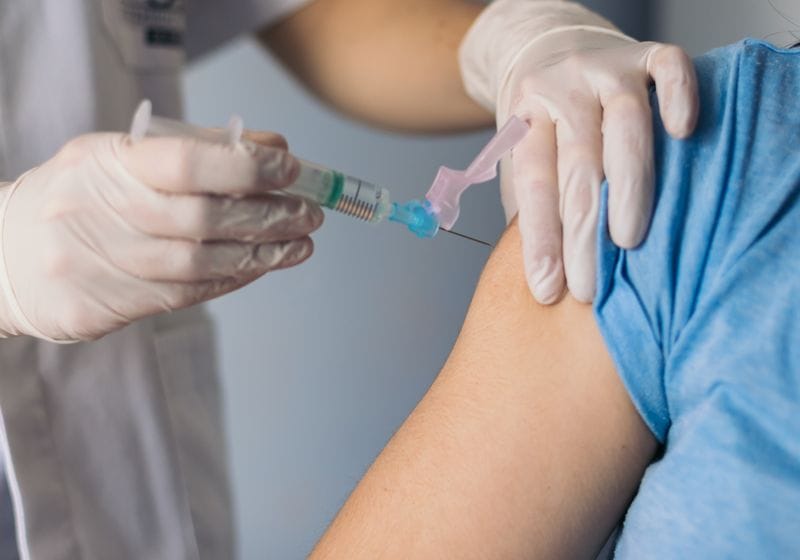The Journey of Vaccines: From Smallpox to Cancer

Vaccines have helped resolve multiple public health crises. New administration strategies, delivery platforms, and applications could offer better protection for more people.
In the late 1800s, Edward Jenner, an English physician and scientist, observed that milkmaids who have previously contracted cowpox are immune to smallpox, a deadly virus from the same family. Curious if cowpox exposure and smallpox immunity are indeed related, Jenner performed the first vaccine “clinical trial” in 1796, where he inoculated eight-year-old James Phipps with cowpox pus. Fortunately for everyone involved, Phipps became immune to smallpox. Jenner later coined the word vaccine after the Latin word vacca, which means cow, then went on to publish his findings in 1798. Nearly two centuries after Jenner’s discovery, smallpox was eradicated. Since Jenner’s first experiment to the recent COVID-19 pandemic, vaccines have resolved a number of public health crises. Discover some of the latest breakthroughs in vaccine research in this article.
Scientists engineered yeasts to make QS-21, a potent vaccine adjuvant, 1,000 times faster than the tree from which it’s naturally extracted can.
© Istock, Dr John A Horsfall
Over a century after Jenner’s discovery, French veterinarian Gaston Ramon observed that horses immunized against diphtheria developed a stronger immune reaction if they were also experiencing an inflammatory response at the injection site. He showed that the addition of various materials to vaccines can trick the body into thinking that it’s undergoing an infection and as a result, enhance immune responses. Today, wide range of things, from aluminum to a Chilean tree bark, are used as vaccine additives—these are commonly known as adjuvants. One of the most potent vaccine adjuvants, QS-21, is traditionally extracted from the bark of the Chilean tree Quillaja Saponaria. But to meet growing demands, scientists had been trying to produce QS-21 in the lab. In a recent Nature study, Jay Keaslinga bioengineer at the University of California Berkeley, and his team figured out a way to synthesize this molecule in yeast, starting with just a simple sugar. The researchers managed to produce QS-21 in days, which is in stark contrast to the 30 to 50 years that the tree normally takes.
Combining multiple vaccines into a single product may have multiple benefits, though not all vaccines can work well together.
© Istock, Graphic
Combining multiple vaccines can mean less trips to the doctor, fewer jabs on babies, and happier parents. But before scientists combine multiple vaccines into a single product, like the diphtheria, pertussis, and tetanus (DPT) vaccine, they must carefully assess whether these vaccines will work well together. A key factor that they need to consider is the desired response from each vaccine. For instance, researchers have found that mRNA-based COVID-19 vaccines and protein-based influenza vaccines can improve each other’s ability to elicit an immune response. On the other hand, because cytokines block viral replication, vaccines that stimulate cytokine production, such as the tetanus vaccine, could interfere with those that depend on viral delivery.
Conjugate vaccines are commonly used to protect immunocompromised individuals, such as young children and the elderly, against life-threatening bacterial infections like meningitis and pneumonia. In this approach, polysaccharides from the disease-causing bacteria’s membrane are chemically linked to “carrier” proteins. This allowed for a much stronger immune response compared to what can be achieved when the bacterial polysaccharides, which are weak antigens, are administered by themselves. Researchers now know that by activating both B and T cells, conjugate vaccines can produce long-lived antibody-producing B cells, memory B cells, and high-affinity antibody molecules. Present studies continue to optimize the choice of carrier proteins and scale conjugate vaccine production to meet global demands at lower costs.
B cells that recognize polysaccharide-only antigens mount a limited T cell-independent immune response that generates short-lived plasma cells and low-affinity antibodies without memory formation. Conjugate vaccines enable B cells to internalize and present carrier-derived peptide or glycopeptide antigens to T cells, which support B cell differentiation, affinity maturation, and immune memory.
modified from © istock.com, Pikovit44, Wood, TTSZ, ClusterX; designed by erin lemieux
Vaccines can protect individuals from cancers due to hepatitis B or human papillomavirus infections, but that’s about as far as preventive cancer vaccines go. Scientists can’t develop vaccines to prevent spontaneous tumors from forming because they can’t predict which tumorigenic protein will arise and should be targeted. However, cancer vaccines can be used therapeutically, such that patient-derived immune cells are exposed to tumor antigens that can activate them, and these activated immune cells are then reintroduced into patients. Some scientists believe that with the right antigens, therapeutic cancer vaccines may allow a long-lasting immune response that dynamically adapts to tumor evolution.
Vaccinating Against TumorsCancer vaccines offer the opportunity to use the patient’s own immune system in the fight against tumors. 1. Antigen preparation: Scientists can produce cancer vaccines against tumors by using the patient’s tumor as a source of antigen or by synthesizing peptides from tumor antigens. 2. Antigen delivery: Researchers use different vaccine platforms to deliver the antigens: patient-derived dendritic cells, adeno-associated viral vectors, and lipid nanoparticles. 3. Antigen presentation: Once administered, these antigens eventually find their way to patient dendritic cells, or are immediately expressed on dendritic cells if they are used as the vehicle. The dendritic cells travel to lymph nodes to activate antigen-specific T cells. 4. Anti-tumor immunity: Once activated, these tumor-antigen-specific T cells will multiply (a) and travel to the tumor, where they help target the tumor cells for destruction (b). Some activated T cells will become memory cells (c, shown in purple); these will reside in the lymph node or nearby tissue to protect the body against future recurrences of the same type of cancer. |
The development of effective vaccines put an end to the COVID-19 pandemic. However, breakthrough cases still occur in vaccinated individuals. Scientists believe that one reason for this is the disconnect between the vaccination site: the arm, and the site of pathogen exposure: the nose. To bridge this gap, Pamela Wongan immunologist at the University of Michigan, and her team developed an intranasal vaccine formulation, which when used to deliver the SARS-CoV-2 spike protein in mice, prevented SARS-CoV-2 from infecting the upper respiratory tract and offered better cross-protection against multiple strains of the virus. Wong’s team envisions that intranasal vaccination be used as a booster to call immune cells that were previously generated from intramuscular vaccination to the nasal cavity to prevent viral entry and infection.
Treatment of newborn babies with antibiotics could disrupt their gut microbiome and response to vaccines.
© Istock, DrAfter123
Physicians commonly administer antibiotics to newborn babies that show signs of infection or worse, sepsis, but this may come at a cost. Recently, David Lynn, an immunologist at the South Australian Health and Medical Research Institute and Flinders University, Helen Marshalla vaccinologist at the Women’s and Children’s Health Network, and their colleagues found that giving antibiotics to newborns could reduce their response to certain vaccines, and the gut microbiome mediates this effect. In their Nature study, the researchers showed that antibiotic-treated infants had less Bifidobacteriaa common bacterial species in the gut microbiome, and this decrease correlated with lower immune responses to various vaccines, such as tetanus. To directly demonstrate the relationship between antibiotics, vaccine response, and the gut microbiome, the researchers turned to mice. They showed that supplementation of either a mix of probiotics or Bifidobacteria alone in germ-free mice recovered their immune response to vaccines.




